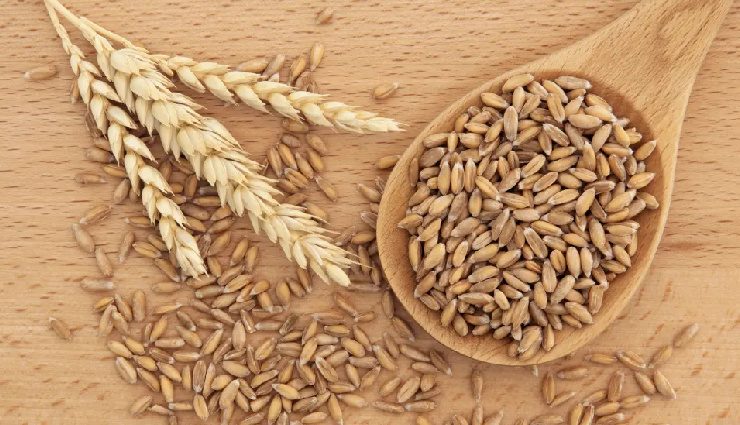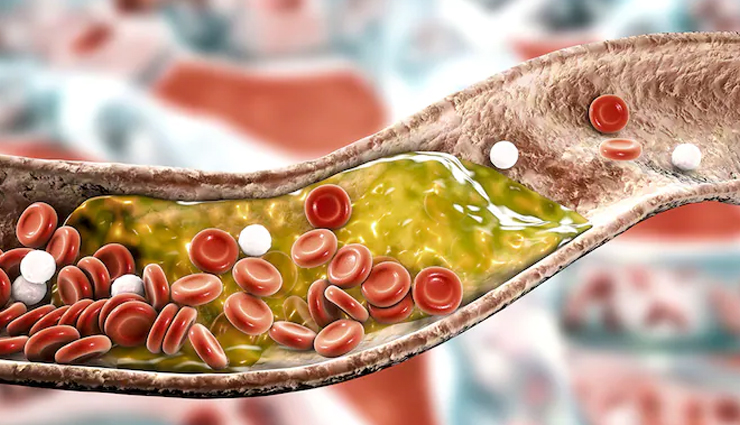- Home›
- Healthy Living›
- 13 Amazing Health Benefits Of Spelt
13 Amazing Health Benefits Of Spelt
By: Saloni Jasoria Fri, 21 Feb 2025 4:15:18

Spelt, also known as dinkel wheat, is a light reddish-brown whole grain that dates back around 8,000 years. It was first cultivated in Europe and bears a close resemblance to wheat. The spelt grain, derived from the spelt plant, has a slightly nutty and sweet taste, similar to wheat flour. A village in Germany, Dinkelsbühl, highlighted its popularity in the 18th century, after which it was introduced to the United States and gained worldwide recognition in the 19th century.
Belonging to the Poaceae family, spelt shares its lineage with barley, wheat, and rye. Its botanical name is Triticum spelta. Like its relatives, spelt contains gluten; however, its gluten protein is more delicate and water-soluble than the stronger, more elastic gluten found in wheat.
Spelt flour is considered nutritionally superior to other flours because it is milled solely from spelt grains, unlike wheat flour, which undergoes extensive processing for commercial appeal. Due to its genetic purity, spelt serves as an alternative for individuals with mild gluten sensitivity, although it is not suitable for those with celiac disease.
Nutritional Value of Spelt
Spelt is rich in fiber, protein, and essential vitamins and minerals, making it a valuable addition to a healthy diet.
Uses of Spelt
Spelt contains natural sugars such as sucrose, fructose, maltose, and glucose, making it a popular choice for baking cookies, pasta, muffins, crackers, cakes, and waffles. De-hulled spelt grains can be used as a rice substitute and are also employed as a healthy alternative to coffee. The grain’s nutty flavor, akin to barley, makes it an essential ingredient in beer production.
Health Benefits of Spelt

# Regulates Cholesterol Levels: The soluble fiber in spelt reduces the absorption of bad cholesterol (LDL) while increasing good cholesterol (HDL).
# Supports Heart Health: High cholesterol can lead to heart conditions like strokes and heart failure. The fiber and magnesium in spelt help lower cholesterol, thereby reducing the risk of cardiovascular diseases.
# Enhances Digestion: Spelt's dietary fiber promotes efficient digestion, prevents constipation, and alleviates gastrointestinal issues like bloating and diarrhea.
# Aids in Weight Management: High-fiber foods promote satiety, reducing cravings for unhealthy, high-fat foods, and assisting in weight control.

# Regulates Blood Pressure: Obesity-induced hypertension occurs when cholesterol narrows blood vessels. Spelt’s fiber content minimizes bad cholesterol formation, helping manage blood pressure.
# Reduces Diabetes Risk: The fiber and complex carbohydrates in spelt slow glucose absorption, preventing sudden spikes in blood sugar and aiding insulin regulation.
# Strengthens Bones: Spelt is rich in manganese, which helps reduce bone loss, fractures, and osteoporosis risk.
# Balances Hormones: Vitamin B3 in spelt supports adrenal gland function, ensuring proper hormone production and reducing hormonal imbalances.

# Alleviates Migraines: Magnesium in spelt helps prevent migraine attacks, while vitamin B2 supports brain function, reducing headaches and stress.
# Prevents Anemia: Iron in spelt aids hemoglobin production and oxygen transport, lowering the risk of anemia by maintaining healthy red blood cell levels.
# Boosts Immunity: Essential vitamins and minerals like iron, copper, and vitamin B1 enhance the immune system, aid enzymatic processes, and prevent inflammation.

# Protects Against Alzheimer’s: Niacin (Vitamin B3) in spelt helps lower the risk of neurodegenerative diseases such as Alzheimer’s and dementia while improving memory and cognitive function.
# Reduces Breast Cancer Risk: Lignans in spelt help regulate hormones in women, reducing the likelihood of breast cancer and alleviating menopausal symptoms like mood swings and hot flashes.





